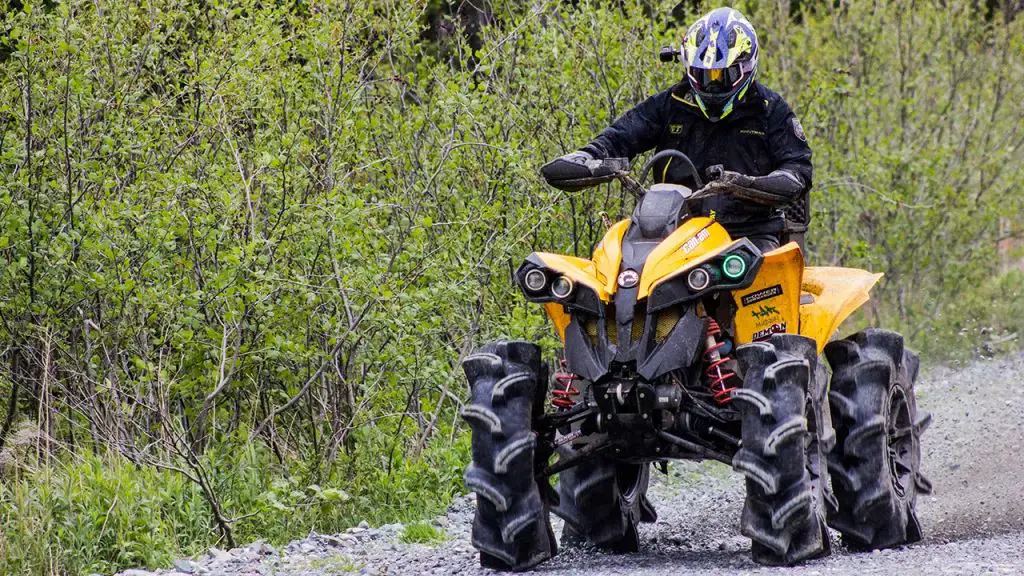All-terrain vehicles (ATVs) are designed for off-road use and can rack up miles quickly when riding on trails and rough terrain. But at what point is an ATV considered high mileage? There are a few factors to consider when determining if a used ATV’s odometer reading is considered high.
Page Contents
ATV Engine Types
The type of engine an ATV has can impact how many miles are considered high. Here are the most common ATV engine types and what’s generally considered high mileage for each:
| Engine Type | High Mileage |
|---|---|
| Single cylinder 4-stroke | 8,000+ miles |
| V-twin 4-stroke | 10,000+ miles |
| 2-stroke | 3,000+ miles |
As you can see, 4-stroke engines tend to last longer than 2-stroke engines before being considered high mileage. The larger V-twin 4-stroke engines can also handle more miles before wear compared to single cylinder 4-strokes.
ATV Riding Conditions
The conditions an ATV was ridden in also impacts how many miles are considered high. ATVs used for recreational trail riding on weekends may be considered lower mileage compared to ATVs used for farm work, ranch work, or commercial operations which see daily use in harsh conditions. Here are some general mileage guidelines based on use:
| ATV Use | High Mileage |
|---|---|
| Recreational/Light Use | 5,000+ miles |
| Farm/Ranch Work | 3,000+ miles |
| Commercial/Heavy Use | 2,000+ miles |
ATVs used commercially or for heavy farm/ranch work tend to rack up miles quicker and experience more wear and tear. Lower mileage guidelines apply compared to recreational ATVs only used lightly on weekends.
ATV Maintenance History
Proper maintenance and service intervals are critical for maximizing an ATV engine and drivetrain’s lifespan. ATVs that have regular oil changes, filter replacements, valve adjustments, belt replacements, and lubrication will typically last longer before being considered high mileage.
When looking at a used ATV, ask to see maintenance records from the previous owner. ATVs with incomplete, sporadic, or unknown maintenance histories may be considered high mileage at lower odometer readings than those with complete documented service histories.
Symptoms of High Mileage
Rather than just looking at the odometer reading, watch and listen for symptoms that can indicate an ATV’s engine or drivetrain is worn out:
- Excessive smoke from the exhaust
- Burning oil smell
- Knocking or pinging sounds from the engine
- Loss of power
- Hard starting
- Leaking fluids
- Loose handling or sloppy steering
- Jerky shifting or slipping transmission
If an ATV shows multiple symptoms of being worn out, it may be considered high mileage even if the odometer reading appears low. Test ride it thoroughly before purchasing to feel for any signs of excessive wear.
Age of the ATV
Along with mileage, the age and overall condition of the plastics, tires, suspension, etc. should be inspected. Older ATVs naturally experience more wear from exposure to the elements and deteriorate over time, even if not ridden often.
For example, a 10 year old ATV with only 2,000 miles but cracked faded plastics, dry rotted tires, and corroded components may be considered higher mileage than its odometer reading suggests.
Conclusion
There is no definitive mileage number that strictly defines a high mileage ATV. It depends on the engine type, riding conditions, maintenance history, age, and overall condition of the vehicle. While guidelines exist based on engine and use, evaluating symptoms of wear and thoroughly test riding the unit provides the best determination of whether a particular ATV is considered high mileage.
Buyers should be extra cautious purchasing high mileage ATVs and inspect them closely for needed repairs or components that may need to be replaced soon. Alternatively, purchasing extended warranty coverage can provide peace of mind with higher mileage machines.
When properly maintained, some ATV engines and drivetrains can log impressive lifetime miles. But at a certain point, the amount of wear adds up and major repairs become imminent. Understanding what constitutes high mileage for an ATV’s age, make, model, and use conditions allows buyers to make informed decisions.
With proper research, inspection, and realistic expectations, high mileage ATVs can still serve many additional miles of useful service. But buyers should be aware they may need repairs and maintenance sooner rather than later.
Consider the engine type, riding conditions, maintenance history, overall condition, and your own risk tolerance when deciding if a particular used ATV’s mileage should be considered high. Test ride carefully, have a mechanic inspect it, and don’t rely solely on odometer readings alone.
ATVs are built tough for off-road adventures. But higher mileage machines demand careful scrutiny to determine how much life they still have left in them before costly repairs are needed. Approach high mileage ATVs with eyes wide open – and be prepared to wrench a little now or down the road.
With thousands of miles of trails and adventure awaiting, a higher mileage ATV still has plenty of fun to be had. They just may need a little extra TLC to keep them running strong as the odometer creeps higher and higher.
Rather than automatically avoiding high mileage ATVs, understand their condition, needs, and maintenance requirements. For the right price and realistic expectations, they can still create years of lasting memories on the trails with the proper care.
Just be diligent in your inspection, know the maintenance requirements, and budget for repairs. With common sense precautions, higher mileage ATVs can still be a good value for the right buyer able to keep their wheels turning for the next adventure.
